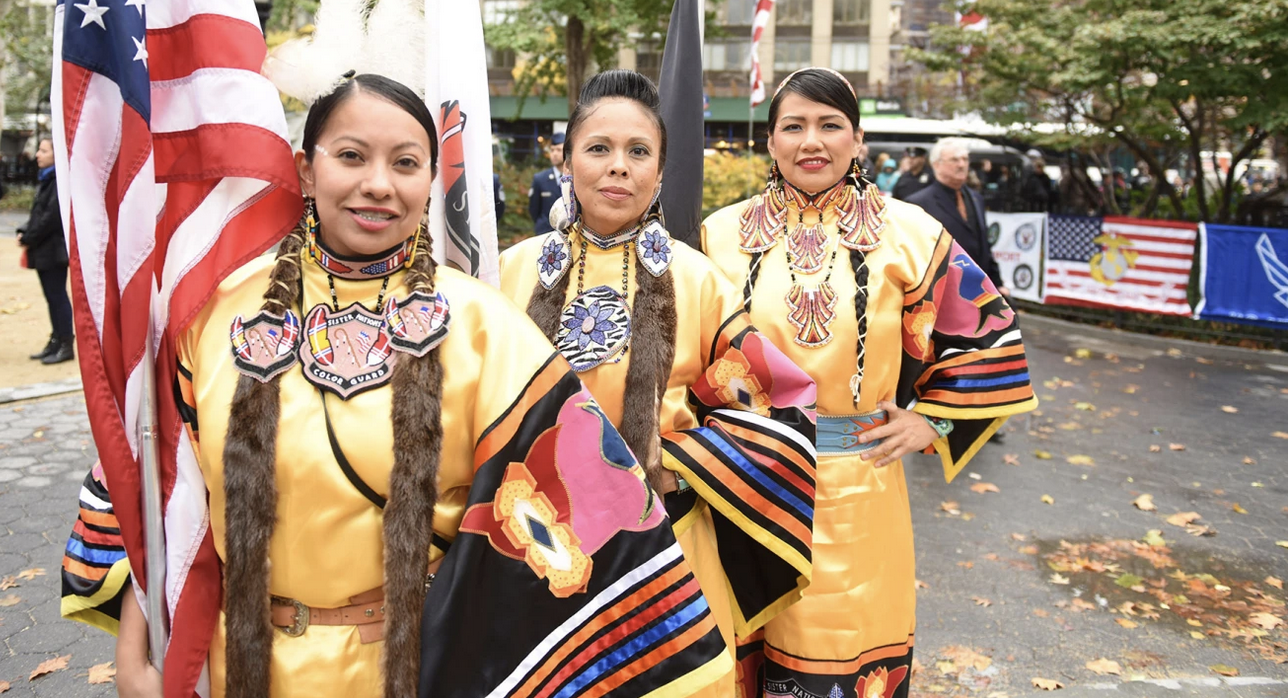
New, first-of-a-kind study highlights Native Americans in NYC
Published in December 2021, the report highlighted the many inequities faced by the population throughout COVID-19.
The New York City Health Department has conducted its first study to highlight the conditions of more than 100,000 Native Americans and Indigenous Peoples who live in the city’s five boroughs.
The population includes peoples of Nahua, Mixtec, Garifuna, Quichua, K’iche and Mam and the Red de Pueblos Transnacionales, representing Mexican immigrants.
The report, which was published in December 2021, revealed that “existing health, economic and other forms of inequities have converged during the COVID-19 pandemic to increase risk of exposure, infection, and death among Indigenous peoples.”
The NYC Health Department @nycHealthy has conducted its first ever study to highlight the conditions of more than 100,000 Native Americans/Indigenous Peoples who live in the five boroughs.
— The New York Women's Foundation (@NYWomensFdn) January 6, 2022
Grantee partner @AICHNYC was consulted as part of the research.https://t.co/mWzOKhma6u
“For the first time in the Health Department’s recorded history, public health information about COVID-19 was released in languages Indigenous to the Americas. Local community leaders provided interpretation in 12 Indigenous languages for virtual community conversations about the COVID-19 vaccines,” the analysis reads.
While the data is limited for the years 2013-2017, it revealed significant disparities in high school degrees, poverty and unemployment and health insurance coverage.
A higher percentage of Native Americans reported heavy alcohol use, sugary drink consumption or being overweight/obese. The data also shows that diabetes and high blood pressure are more common among Indigenous peoples than other racial groups.
Last October, the New York City Board of Health declared racism a public health crisis, citing America’s history of slavery and the devastating outcomes for people of color during the pandemic.
“Some health outcomes among Indigenous peoples of the Americas in NYC are comparable to those seen among other communities of color in NYC that have been negatively impacted by structural and institutional racism,” the report said.
Health officials worked with the American Indian Community House, a nonprofit group serving urban Natives since 1969 as part of its research.
RELATED CONTENT
The report said that despite limitations in studying a small and diverse population, the first Native Americans study is a good starting point to dig deeper into the conditions of Indigenous communities and differences among them.
This is detail from the NYC Health Department's first survey of Indigenous people there. The languages highlighted in yellow are Indigenous languages spoken in areas of the city. pic.twitter.com/ODq2KSAMoO
— UAINE (ndnviewpoint) (@mahtowin1) January 4, 2022
“These findings point to areas of concern and potential intervention related to the health of Indigenous peoples of the Americas living in NYC,” the report said.
However, the study does acknowledge that current methods used by the Census and the city Health Department undercount Indigenous peoples, stating that the methods of data collections are “steeped in colonialism.”
“Historic and present-day experiences of cultural and economic oppression, racism, and anti-immigrant and linguistic bias may deter residents from participating in the very surveys meant to ensure they are represented in order to provide important information to help serve their needs,” the study said.
It also says that the current terminology used does not reflect the terms people used to describe themselves, and some of the terminology is perceived as offensive to some. The terminology also doesn’t capture the breadth of the group intended to be represented.
For instance, Mexican, Central, and South Americans of Indigenous origin are often unfamiliar with U.S. racial categories so they will likely choose the “other” category on the census and other surveys.
To resolve this, the Health Department expanded its questionnaire response on its Community Health Survey and added a follow-up question for Indigenous residents to identify tribal heritage or ancestry groups.
“This is a small but important step to begin to more fully represent New Yorkers Indigenous to the Americas in our population surveys,” the report says.










LEAVE A COMMENT: